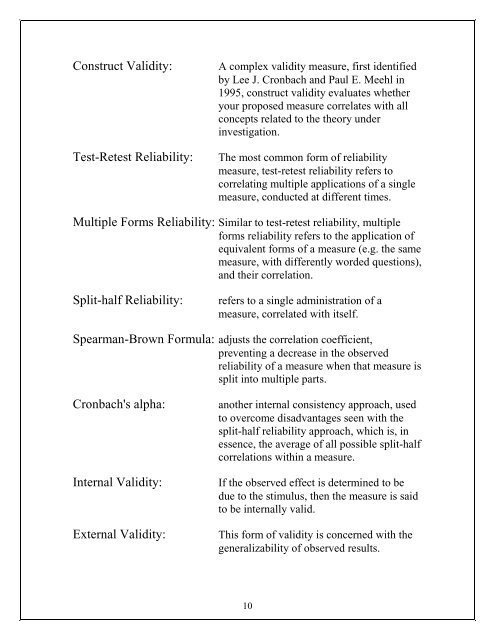About Validity and Reliability - Atrium
About Validity and Reliability - Atrium
About Validity and Reliability - Atrium
Create successful ePaper yourself
Turn your PDF publications into a flip-book with our unique Google optimized e-Paper software.
Construct <strong>Validity</strong>:Test-Retest <strong>Reliability</strong>:A complex validity measure, first identifiedby Lee J. Cronbach <strong>and</strong> Paul E. Meehl in1995, construct validity evaluates whetheryour proposed measure correlates with allconcepts related to the theory underinvestigation.The most common form of reliabilitymeasure, test-retest reliability refers tocorrelating multiple applications of a singlemeasure, conducted at different times.Multiple Forms <strong>Reliability</strong>: Similar to test-retest reliability, multipleforms reliability refers to the application ofequivalent forms of a measure (e.g. the samemeasure, with differently worded questions),<strong>and</strong> their correlation.Split-half <strong>Reliability</strong>:refers to a single administration of ameasure, correlated with itself.Spearman-Brown Formula: adjusts the correlation coefficient,preventing a decrease in the observedreliability of a measure when that measure issplit into multiple parts.Cronbach's alpha:Internal <strong>Validity</strong>:External <strong>Validity</strong>:another internal consistency approach, usedto overcome disadvantages seen with thesplit-half reliability approach, which is, inessence, the average of all possible split-halfcorrelations within a measure.If the observed effect is determined to bedue to the stimulus, then the measure is saidto be internally valid.This form of validity is concerned with thegeneralizability of observed results.10
















